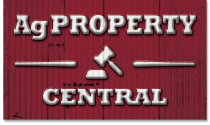
Amra Park at Willalo in the Mid North exemplifies the kind of property which has lifted the state’s agricultural land values in the past year. Photo: Ray White SA
THE appetite of Australian farmers to buy land is remaining strong and the deals are getting bigger, according to agribusiness banking specialist Rabobank’s annual Australian Agricultural Land Price Outlook.
The report said farmers’ appetite for property purchase remained strong, with recent Rabobank research – conducted in Q1 2023 – showing seven percent of Australian farmers intend to buy land in the next 12 months.
New South Wales, however, was the only state where intentions to purchase land were found to have grown since last year, the report says.
Based on the analysed data, the report found agricultural land deal sizes were increasing. Especially in Queensland and NSW, Rabobank said, where 22 percent and 14pc of sales respectively exceeded $10 million.
Report author RaboResearch agriculture analyst Vitor Pistoia said overall in the bank’s data set, 11pc of cropping and 13pc of Australian grazing land sales in 2022 exceeded $10 million.
Highest price growth in SA
South Australia recorded the highest growth in agricultural land prices of all states in 2022 — 34pc – but this had not been evenly distributed across its regions.
Agricultural land prices in NSW were shown to have experienced strong growth in 10 out of 15 regions in the state in 2022, according to the report, with a year-on-year increase of 19pc overall.
In Queensland, the average price of agricultural land in the state grew by 20pc in 2022.
Median agricultural land prices in Victoria jumped by 28pc in 2022, according to the report – after a massive 40pc increase the prior year – with all regions in the state continuing the upward trend in land prices.
In Western Australia, prices paid for farmland had reached a record high, following three consecutive good seasons. The state’s average agricultural land price increased by 22.5pc in 2022, bringing the value to just over $6000 per hectare.
Farmland prices in most regions of Tasmania had also continued to rise rapidly, the report said, recording a 26pc increase in the median price of the state’s agricultural land for the second consecutive year in 2022.
Growth to slow by 2028
Rabobank said Australian agricultural land is also on track for another year of strong price growth in 2023.
The report, supported by farmland sales data from DAS (Digital Agricultural Services), said three consecutive seasons of good financial performance for Australia’s farm sector – driven by high commodity prices and good weather conditions for the majority of the country – is set to once again fuel “double digit” percentage growth in agricultural land prices for the year ahead, albeit easing from the record near-30pc increases seen in 2022 and 2021.
The bank’s analysis – of the DAS data set which comprises genuine rural sales and excludes lifestyle and non-market transactions – showed agricultural land prices across the country rose by 29pc (median price per hectare) in 2022, with cropping land increasing by 29pc, livestock grazing land by 26pc and dairy by 29pc.
Agricultural land prices were found to have recorded double digit percentage growth on the previous year in all states, with South Australian farmland prices rising the most – at 34pc.

Vitor Pistoia.
Mr Pistoia said agricultural land prices across the country had soared again in 2022, with the “macro settings” having been favourable for land purchases and farming profits in Australia.
“Prices for most major commodities reached record highs, widespread rainfall supported agricultural yields – which also surpassed historical records in some regions – and interest rates were at historical lows for almost half the year,” he said.
While a decline in agricultural land prices is not forecast, the bank cautions that – after the estimated double digit percentage price increase this year, a significant slowdown in the “pace” of price growth – which had been “massive” in recent years – is expected from 2024 potentially through to 2028.
Mr Pistoia said “farmland sale prices in early 2023 are still setting new records”, with prices in 2023 expected to continue to rise.
“Albeit to a lesser extent to the previous year as the combination of high property prices and increasing interest rates – along with the expected onset of El Nino, and potentially drier weather for many parts of Australia, which may hamper agricultural yields – will be impacting farmers’ appetite for buying land,” he said.
Mr Pistoia said the income outlook for Australian farmers in 2023/24 was, though, “solid and positive” with above-historical-average prices for agricultural commodities still granting good profitability and with recent high costs for farm inputs now easing.
However, looking out from 2024 to 2028, he said – with the record highs for agricultural yields and commodity prices seen in the past three years unlikely to be repeated – there are expectations of a slowing pace in the growth of land prices, although with no price declines expected.
“Commodity prices are likely to remain at good levels for farmers for the next one to two years. However, the drier forecast may result in lower yields and reduced margins, while rising interest rates will curtail long-term investment plans,” he said.
“Currently, cash already available in the system and stocks of grains and livestock ready to enter the market remain the key factors driving land price growth.”
Source: Rabobank

HAVE YOUR SAY